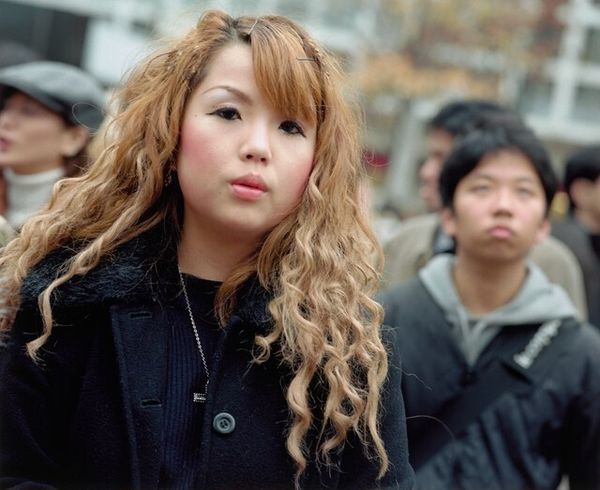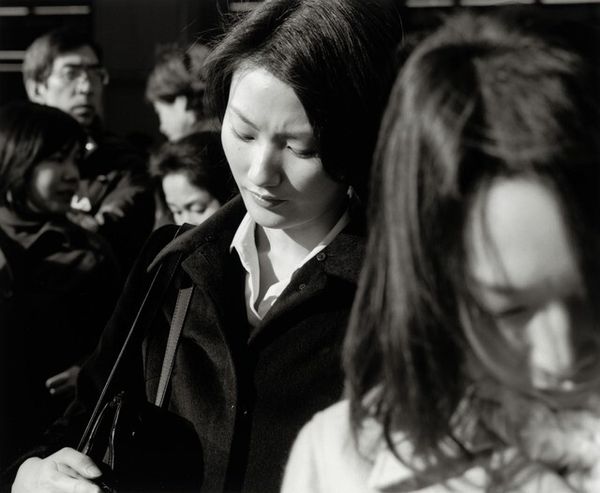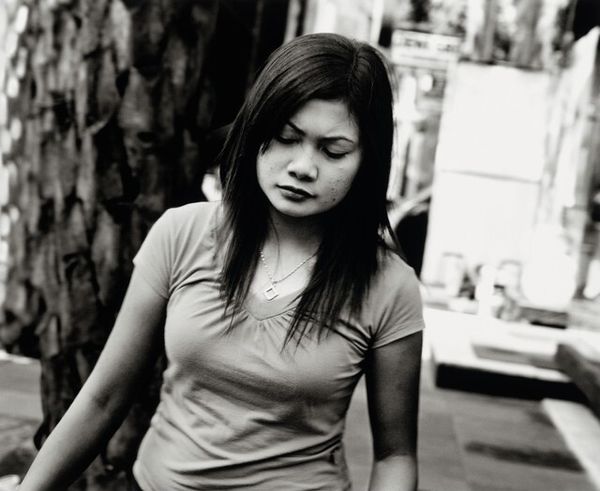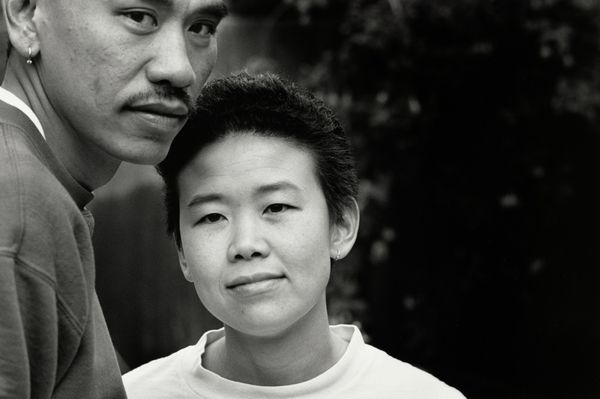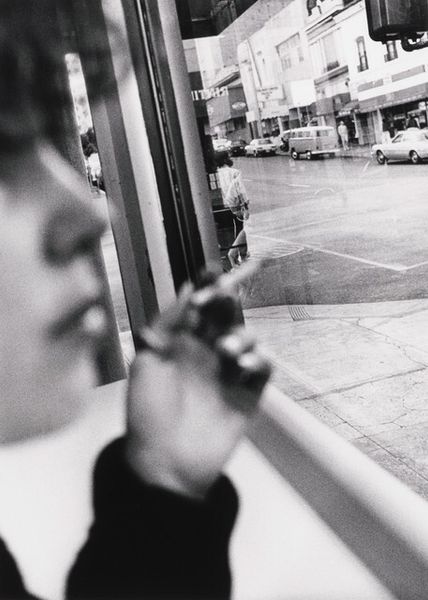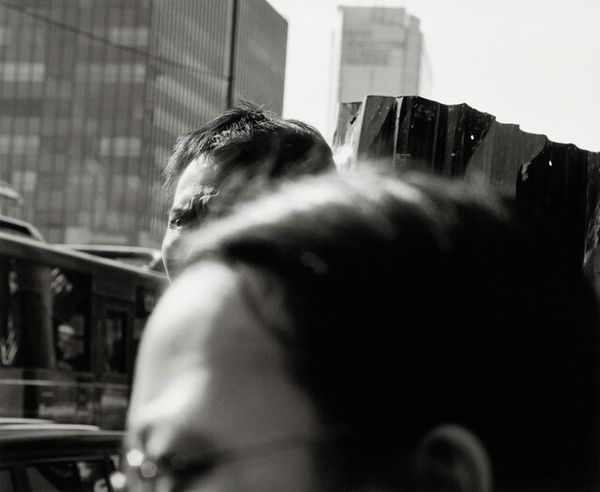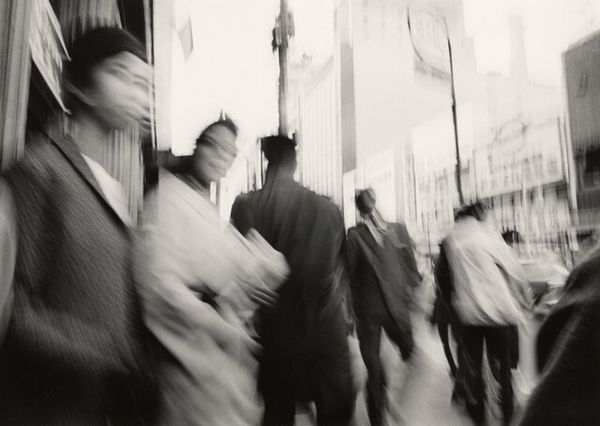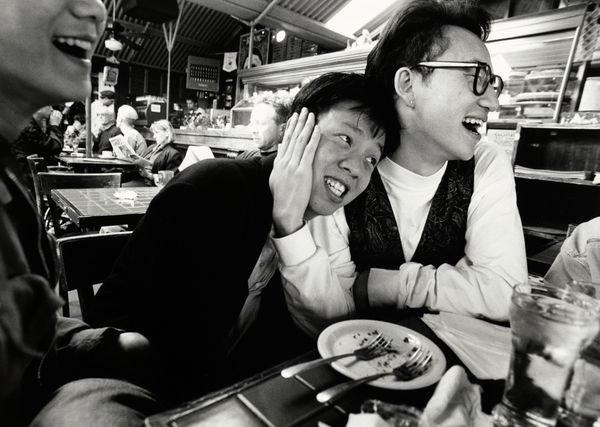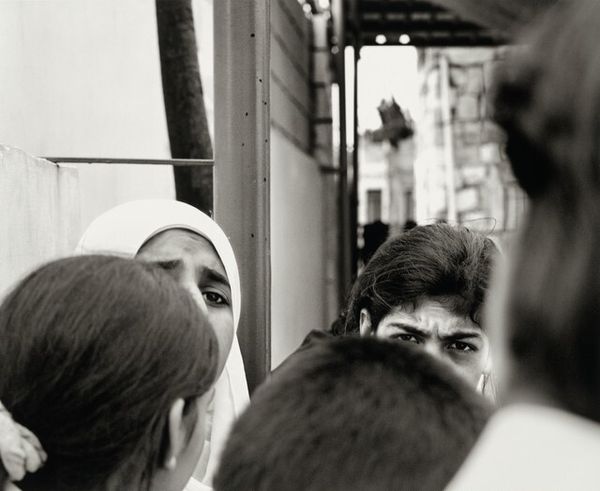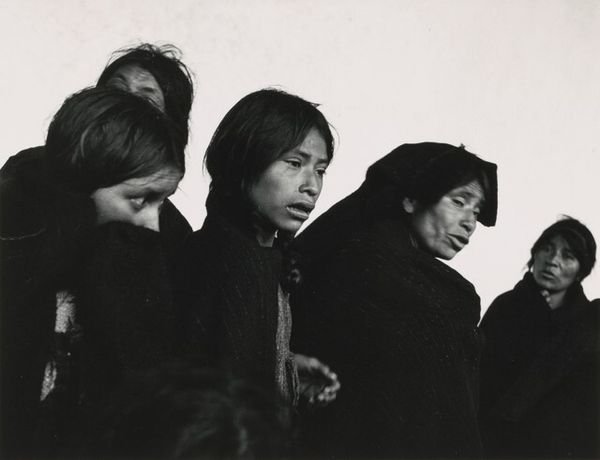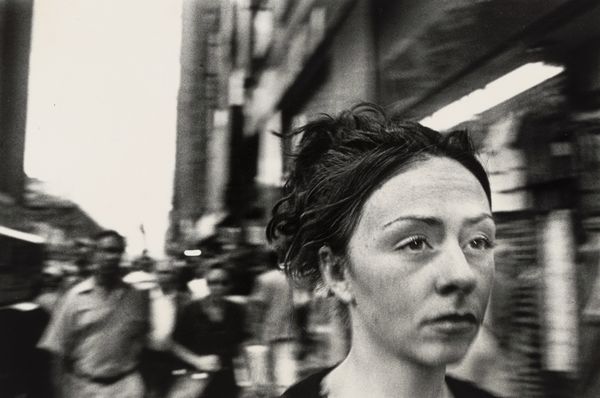
Dimensions: image: 40.64 × 49.53 cm (16 × 19 1/2 in.) sheet: 58.42 × 67.31 cm (23 × 26 1/2 in.)
Copyright: National Gallery of Art: CC0 1.0
Editor: This is Leo Rubinfien’s gelatin silver print, "Tokyo, 2002, at Shibuya Station," dating sometime between 2002 and 2014. It strikes me as an intensely observant street photograph. What catches your attention in this piece? Curator: What I find most compelling is how Rubinfien captures the social fabric of Tokyo through the lens of its public spaces. Shibuya Station, as a major transit hub, becomes a stage for observing contemporary Japanese life. Notice how the individual is framed within a crowd, a recurring theme in street photography. It makes you wonder, doesn't it, how public spaces shape personal identity and vice versa. Editor: It does. And I notice it's black and white, which gives it a timeless feel, almost documentary. Was he making a specific statement about Japanese culture? Curator: Absolutely, that aesthetic choice lends the work a documentary quality that's steeped in history. More generally, black and white simplifies and flattens and encourages looking, even analyzing. However, instead of simple social commentary, I suggest Rubinfien gives us more ambiguous view. By focusing on the expressions of those who occupy public space, he is showing an intimate look into Japanese culture. This departs from images manufactured by external marketing pressures, and encourages thinking about this image's context of production. Editor: That’s fascinating. The anonymity of the crowd and her own individuality highlighted within it… almost speaks of modern alienation and also community. Curator: Exactly! Consider also the influence of figures like Daido Moriyama, known for his gritty and high-contrast street photography in Japan, and consider how different are Rubinfien’s treatment of analogous settings. I find it also highlights how socio-political environments enable different forms of expressions. Editor: So, beyond its aesthetic qualities, this image really opens a window onto a specific moment and place in time and highlights artistic vision of different historical figures? Curator: Precisely. It's not just a photograph, but a visual document reflecting the complex interplay between the individual and the collective in urban Japan, positioned to be examined along a variety of viewpoints. Editor: I'll never look at a street photograph the same way. Thanks!
Comments
No comments
Be the first to comment and join the conversation on the ultimate creative platform.
